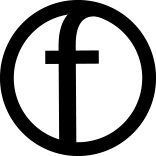Wegas/wegam insurance
Wegas/wegam insurance
Road axle insurance is the abbreviation of employers' liability insurance . This road axle insurance is taken out as a supplement to the 'normal' business liability insurance . The Supreme Court previously ruled that road axle insurance is part of 'good employership'.
Road axle insurance is the abbreviation of employers' liability insurance . This road axle insurance is taken out as a supplement to the 'normal' business liability insurance . The Supreme Court previously ruled that road axle insurance is part of 'good employership'.
As an employer, you are liable if an employee is injured during working hours. This may involve injuries in the workplace, in traffic or during other work-related activities. The Wegas insurance reimburses the damage resulting from the liability claim.
With the WEGAM insurance (employer's liability for motor vehicles), you as an employer are insured against damage that your employees sustain during their work in the event of a traffic accident. If an employee suffers damage or injuries during a business trip, you as an employer can quickly be liable.
DIFFERENCE WEGAM AND WEGAS .
This Liability Insurance is usually abbreviated as WEGAS . WEGAM is also used. This means employers' liability insurance for drivers of motor vehicles. The M therefore refers to motor vehicles, but the coverage is also limited. We always recommend Wegas insurance because the coverage is broader.
Request a quote from Wegas/Wegam insurance
Finass Verzekert is a specialist in the field of insurance. Finass Verzekert offers a specific product for insuring the Wegas/wegam with unique features. You can complete the quote request below and we will make a no-obligation quote for you.

















